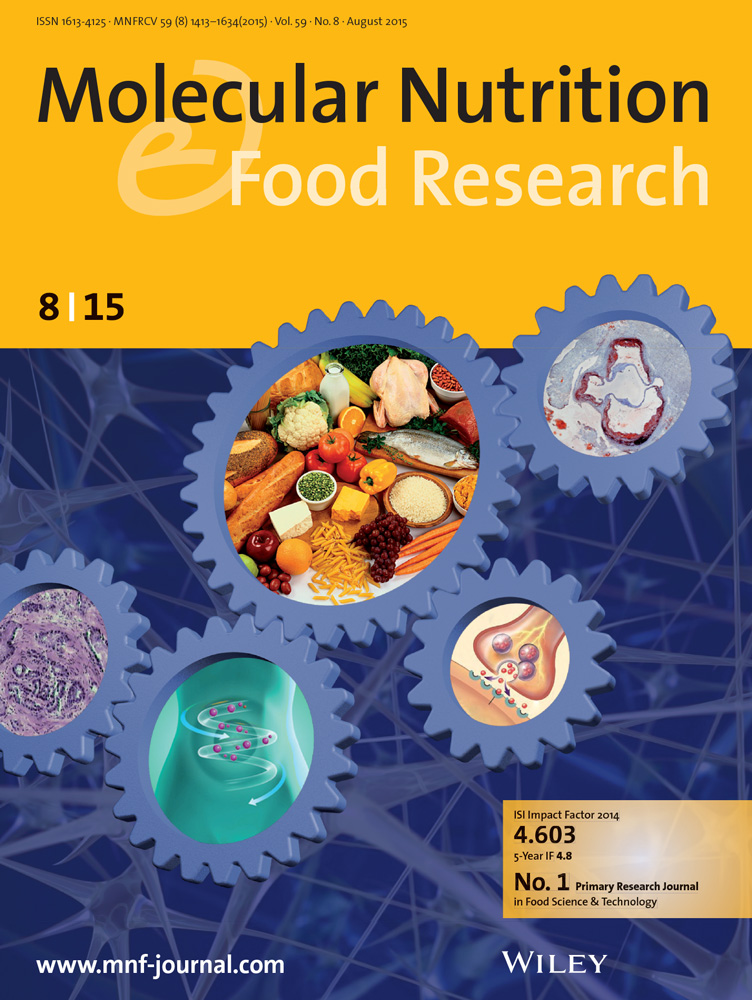Oleuropein Mitigates Radiation‐Induced Neurodegeneration in Rats by Modulating Oxidative, Vascular, and Apoptotic Pathways
IF 4.2
2区 农林科学
Q1 FOOD SCIENCE & TECHNOLOGY
引用次数: 0
Abstract
Radiation (RAD) is widely used in medicine but poses risks to non‐regenerative tissues such as the brain. This study aimed to investigate the neuroprotective effects of oleuropein (OLE) against RAD‐induced brain injury in rats by evaluating oxidative stress, apoptosis, and vascular responses. Thirty‐two male Wistar rats were randomly assigned to four groups: Control, RAD (6 Gy cranial irradiation), RAD+OLE (50 mg/kg/day oral gavage, initiated 1 week before and continued 3 weeks after irradiation), and OLE alone. Histopathological (H&E, PAS), immunohistochemical (Cyclin‐D1, CD31, GLUT‐1), biochemical (serum CK‐BB), and molecular (Bax, Bcl‐2 mRNA via RT‐qPCR) analyses were performed. RAD exposure resulted in significant neuronal degeneration, upregulation of Cyclin‐D1, CD31, and GLUT‐1 expression, increased pro‐apoptotic Bax, decreased anti‐apoptotic Bcl‐2, and elevated serum CK‐BB (橄榄苦苷通过调节氧化、血管和凋亡通路减轻辐射诱导的大鼠神经变性
辐射(RAD)广泛应用于医学,但对大脑等非再生组织构成风险。本研究旨在通过评估氧化应激、细胞凋亡和血管反应,探讨橄榄苦苷(OLE)对RAD诱导的大鼠脑损伤的神经保护作用。将32只雄性Wistar大鼠随机分为4组:对照组、RAD (6 Gy颅照射)、RAD+OLE (50 mg/kg/天口服灌胃,照射前1周开始,照射后3周持续)和单独OLE。进行组织病理学(H&;E, PAS),免疫组织化学(Cyclin‐D1, CD31, GLUT‐1),生化(血清CK‐BB)和分子(Bax, Bcl‐2 mRNA通过RT‐qPCR)分析。RAD暴露导致显著的神经元变性,Cyclin - D1、CD31和GLUT - 1表达上调,促凋亡Bax升高,抗凋亡Bcl - 2降低,血清CK - BB升高(p <;0.05)。OLE治疗可显著减轻这些改变,恢复脑组织结构,使PAS染色正常化,下调凋亡和血管标志物,降低CK - BB水平(p <;0.05)。这些发现表明,OLE通过减轻氧化应激、血管激活和细胞凋亡,对RAD诱导的脑损伤具有有效的神经保护作用。OLE可能作为一种有希望的辅助放射治疗,以减少中枢神经系统(CNS)的副作用。进一步的研究关注功能结果和剂量优化是必要的。
本文章由计算机程序翻译,如有差异,请以英文原文为准。
求助全文
约1分钟内获得全文
求助全文
来源期刊

Molecular Nutrition & Food Research
工程技术-食品科技
CiteScore
8.70
自引率
1.90%
发文量
250
审稿时长
1.7 months
期刊介绍:
Molecular Nutrition & Food Research is a primary research journal devoted to health, safety and all aspects of molecular nutrition such as nutritional biochemistry, nutrigenomics and metabolomics aiming to link the information arising from related disciplines:
Bioactivity: Nutritional and medical effects of food constituents including bioavailability and kinetics.
Immunology: Understanding the interactions of food and the immune system.
Microbiology: Food spoilage, food pathogens, chemical and physical approaches of fermented foods and novel microbial processes.
Chemistry: Isolation and analysis of bioactive food ingredients while considering environmental aspects.
 求助内容:
求助内容: 应助结果提醒方式:
应助结果提醒方式:


